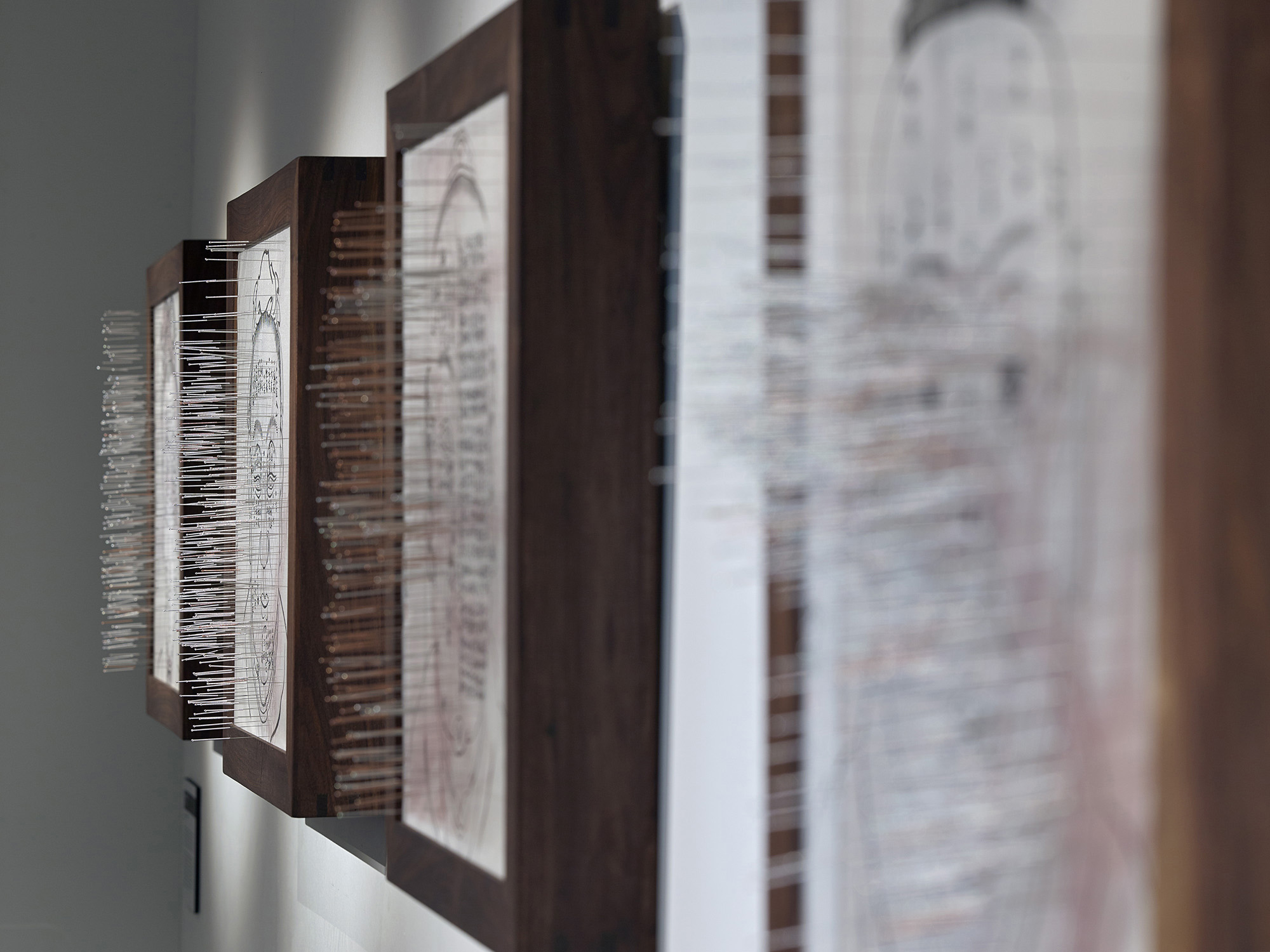Shows
Zhang Yanzi’s “A Quest for Healing”


Considering Zhang Yanzi’s practice is deeply rooted in Chinese artistic traditions, showing her ink paintings and installations at the Surgeons’ Hall Museums in Edinburgh—a product of the Scottish Enlightenment—could have resulted in her works being overwhelmed or skewed by the potentially mismatched context. This pitfall, however, was deftly avoided. The juxtapositions between Zhang’s work and the Museum’s displays proved instead to be productive in their frictions.
Zhang’s Qi (2012), a 60-meter ink scroll depicting the Beijing-Hangzhou Grand Canal, exhibited at the Venice Biennale in 2013, zigzagged above the Museum’s main gallery, which houses a collection of pathology specimens as well as surgical and dental instruments. Because of its dominating scale, Zhang’s installation was visible in its own right, but there were also more subtle interactions between the work and its setting. In the work's lines of calligraphy, Zhang equates the Canal and its facilitation of mobility—and subsequently the growth of China’s trade and social networks—with the meridian channels of the body, described in Chinese medicine as the pathways through which qi, or energy, flows. Drawing on the fundamental tenet of traditional ink painting, where the goal is to capture not just the likeness of a scene but the essence of the depicted subjects, Zhang’s landscape exemplifies a holistic system for observing the world that is in stark contrast to the empirical taxonomy and clinical detachment of the anatomical displays that sat beneath Qi. This disparity gave a twist to the Museum’s superficial allusions to the shared interest between China and colonial British powers in the wellbeing of their general populaces, expressed throughout the exhibition’s texts.
Zhang’s paralleling of the systems of cities and bodies continued in her four multilayered, mixed media works, Secret Path 1–4 (2018), inspired by an anatomical notebook from 1881 by then-surgical student David Middleton Greig, which Zhang encountered during her residency at the Museum. In Secret Path, Zhang turns Greig’s arterial maps into what might be tracks of streams or hanging trees. Superimposed over each landscape and held in place by dozens of acupuncture needles is a second drawing of a face based on a Song Dynasty textbook, describing how moles and blemishes can be used to determine the subject’s character and destiny. Zhang thus creates intriguing connections between the artfulness of Greig’s original drawings and the poetics of her ink paintings—both attempting to diagnose the human state.

Elsewhere, touching on Western medicine and art as a method of healing was Wishing Capsules (2018), a site-specific wall installation comprising hundreds of pieces of foil medicine packaging, the capsules of which each contain a wish inscribed on a rolled up piece of color paper by a visitor. The contrast between Chinese and Western medicine systems is evidently rich territory for artists. Two works, Sanctuary and Scar (both 2016)—the results of Zhang’s 2016 project at the Hong Kong Museum of Medical Sciences—further underscored this point. Both installations are based on prototypes of surgery tables used during childbirth. In Sanctuary, a table is wrapped in analgesic plaster, which features drawings of plants used in Chinese medicine, while Scar is swathed in a bright red landscape, depicted alongside lines of poetry on torn cinnabar-treated bandages. Scar and Sanctuary, conceived as homages to the bravery of women, are also proposals for more humane and healing birthing apparatuses. Placed next to these works was the sculpture All Volcanoes are Nothing but Acne (2018), a pink fabric blob covered in acupuncture needles that looks like an enlarged virus. The work references the history of the plague in China in the 19th and 20th centuries, which coincided with Britain’s imperial rule in Hong Kong, where the spread of the virus was a pressing issue for the colonial government. The connection between the health of the individual and the wellbeing of the collective, colonized body was one among many fascinating subjects arising from the stimulating show.
Zhang Yanzi’s “A Quest for Healing” is on view at the Surgeons' Hall Museums, Edinburgh, until November 4, 2018.







